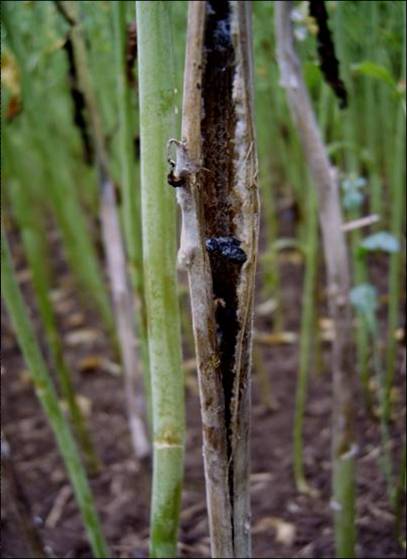
According to the latest BASF/ADAS Sclerotinia Monitoring Bulletin, Sclerotinia germination is still increasing in all regions. Most crops are at or beyond the mid-flower stage. High petal infection is being found in some crops in all regions and there is a late infection risk as minimum temperatures rise above 7°C.
Most crops are at mid to late flowering and are setting pods (BBCH 67). Some crops have finished flowering on the main raceme but still have flowers on the branches. Some crops of later flowering varieties such as DK Cabernet or later crops of other varieties have suffered severe loss of flower buds which has been attributed mainly to low temperatures. Affected crops are expected to recover and produce new flowering shoots. Very backward crops and pigeon damaged areas are still barely flowering (BBCH 61). Sclerotinia is germinating at all sites now. As night temperatures are likely to be above 7°C, the infection risk is now at its highest for the season to date. Rainfall has been variable during the last week, but some infection may have taken place, particularly in the south. The first sclerotinia stem rot has been found in Hereford but levels are very low. The greatest sclerotial germination (54%) is on Romney Marsh, Kent with Devon close behind (42%) this week. Petal tests have shown over 47% sclerotinia infection (in Hereford and Kent), but there are also some high counts in all regions at high risk sites. This indicates that spores could well be present in quite large numbers at high risk sites.
The sclerotinia risk is increasing because of higher sclerotial germination, petal fall in most crops and night temperatures reaching the 7°C threshold for plant infection. Long periods of high humidity are also required for infection – keep watching for more rain. Fungicides applied at the yellow bud stage should provide some protection against sclerotinia during early flowering. The main sclerotina spray can then be applied about 3 weeks later at the mid-flowering stage. It looks like it will be a late epidemic (if there is one) this year.
In the South East and East Anglia, most crops are at the mid-to late flowering stage with few buds left on the main raceme. Some crops are becoming green Soil temperatures dipped below 10°C during the last week, but this has not stopped sclerotia germinating - including the first germination at Boxworth. Crops at high risk sites should be considered at risk. Sclerotinia has been present on petals at high levels in some crops (eg 47% on Romney Marsh and 30% at one high risk site in Essex but low levels (up to 5%) are more frequent.
In the SouthWest and West, most crops are at mid to late flowering. Crops treated at yellow bud or early flower should receive a second spray to maintain protection during May. The sclerotia are germinating in Devon and Hereford at the moment and the risks of infection are higher than in other regions. Petal test indicate that sclerotinia spores are present in large numbers (50% petals infected) in some crops in these regions. Some plant infection could have started recently where night temperatures have been above 7°C.
In Lincolnshire and the East Midlands, most crops are at the mid to late flowering stage. Terrington depot showed the greatest increase in sclerotial germination in the network during the last week. Sclerotinia is present on petals, sometimes at high levels particularly where there is a coastal influence. Flowering crops should be protected before mid-flowering.
In the North of England, crops are at mid to late flowering. Sclerotial germination has not increased this week at the Malton site, but fruiting bodies (apothecia) are still producing air-borne spores. Petal tests indicate that there is some sclerotinia risk and crop infection could start when night temperatures are above 7°C.
